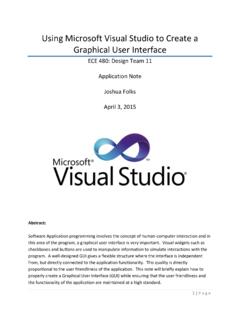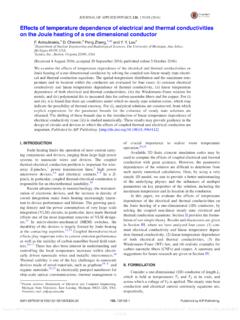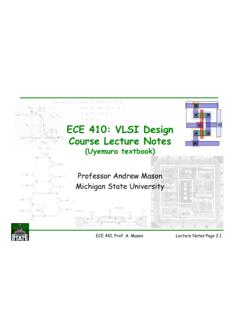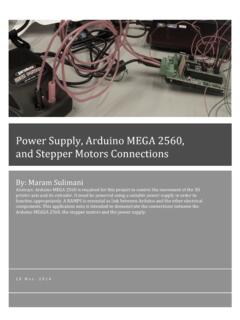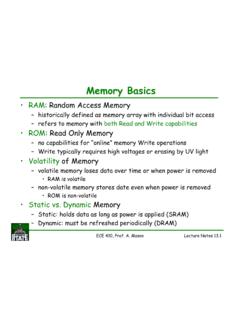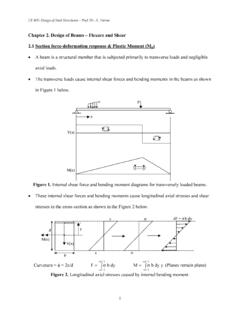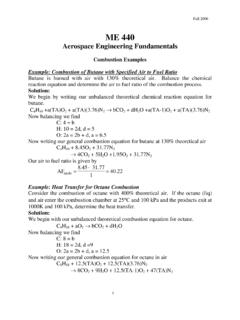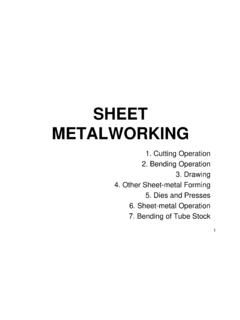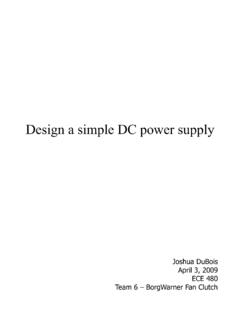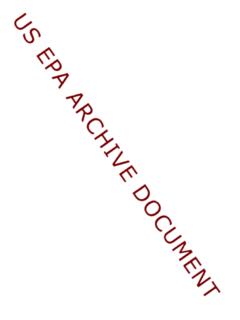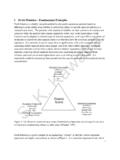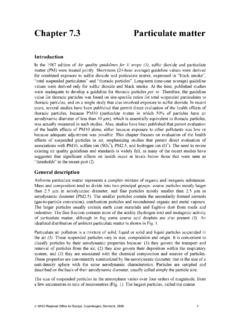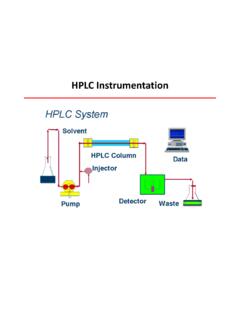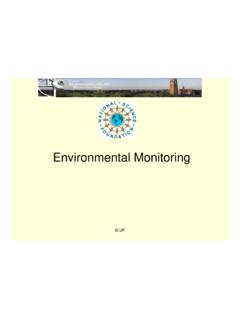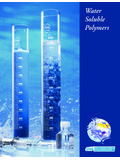Transcription of Dead End Membrane Filtration - Michigan State University
1 Dead End Membrane Filtration ENE 806 Laboratory Feasibility Studies in Environmental Engineering Spring 2006 Instructor: Dr. Syed A. Hashsham Report by Ahsan Munir (PID: A37589962) Acknowledgement First and foremost, my sincere thanks are due to Professor Syed A. Hashsham who has provided me a chance to take this course. It had been a wonderful exposure that has benefited me a lot. I am especially grateful for his excellent guidance, patient hearings and long sessions of discussions, which were of great help to me for completing this setup on time. I feel a great sense of gratitude to Joseph Nguyen, Lab Technician who has provided me with all possible information and guidance when and where required. I also express my sincere thanks to Fulin Wang, students and all others who have helped me directly or indirectly whenever I needed.
2 Last but not the least, heartfelt thanks are due to my family and friends. Ahsan Munir iiTABLE OF CONTENTS PAGE Title Page i Acknowledgement ii Table of Contents iii CHAPTER I INTRODUCTION 1 Types of Membrane Processes 1 Dead End Filtration : Theory & Equations 6 Membrane Transport Mechanism 6 II EXPERIMENTAL SET UP 9 Equipments Installation 10 Dispensing Pressure Vessel 10 Stirred Cell 11 Membrane 11 Stirrer Assembly 12 Gas Pressure Line
3 12 Cell Operation 13 Digital Balance 14 Cost of Equipments 15 Data Acquisition 15 III EXPERIMENTAL PROCEDURE 28 Clean Water Resistance Test 28 Fouling Test 28 IV RESULTS AND DISCUSSIONS 29 V CONCLUSIONS AND RECOMMENDATIONS 32 REFERENCES 33 iiiI.
4 Introduction Membrane Filtration can be a very efficient and economical way of separating components that are suspended or dissolved in a liquid. The Membrane is a physical barrier that allows certain compounds to pass through, depending on their physical and/or chemical properties. Membranes commonly consist of a porous support layer with a thin dense layer on top that forms the actual Membrane . Types of Membrane Filtration based on Membrane pore sizes are described below; Types of Membrane Processes Ultrafiltration Ultrafiltration (UF) is the process of separating extremely small particles and dissolved molecules from fluids. The primary basis for separation is molecular size , although in all Filtration applications, the permeability of a filter medium can be affected by the chemical, molecular or electrostatic properties of the sample.
5 Ultra Filtration can only separate molecules which differ by at least an order of magnitude in size . Molecules of similar size can not be separated by ultra ranging in size from 1K to 1000K molecular weight (MW) are retained by certain ultrafiltration membranes, while salts and water will pass through. Colloidal and particulate matter can also be retained. Ultrafiltration membranes can be used both to purify material passing through the filter and also to collect material retained by the filter. Materials significantly smaller than the pore size rating pass through the filter and can be depyrogenated, clarified and separated from high molecular weight contaminants. Materials larger than the pore size rating are retained by the filter and can be concentrated or separated from low molecular weight contaminants.
6 Ultrafiltration is typically used to separate proteins from buffer components for buffer exchange, desalting, or concentration. Ultrafilters are also ideal for removal or exchange of sugars, non-aqueous solvents, the separation of free from protein-bound ligands, the removal of materials of low molecular weight, or the rapid change of ionic and/or pH environment (see Figure ). Depending on the protein to be retained, the most frequently used membranes have a nominal molecular weight limit (NMWL) of 3 kDa to 100 kDa. Ultrafiltration is far gentler to solutes than processes such as 1precipitation. UF is more efficient because it can simultaneously concentrate and desalt solutes. It does not require a phase change, which often denatures labile species, and UF can be performed either at room temperature or in a cold room.
7 Microfiltration Micro Filtration (MF) is the process of removing particles or biological entities in the m to m range from fluids by passage through a microporous medium such as a Membrane filter. Although micron-sized particles can be removed by use of non- Membrane or depth materials such as those found in fibrous media, only a Membrane filter having a precisely defined pore size can ensure quantitative retention. Membrane filters can be used for final Filtration or prefiltration, whereas a depth filter is generally used in clarifying applications where quantitative retention is not required or as a prefilter to prolong the life of a downstream Membrane . Membrane and depth filters offer certain advantages and limitations.
8 They can complement each other when used together in a microfiltration process system or fabricated retention boundary defined by a Membrane filter can also be used as an analytical tool to validate the integrity and efficiency of a system. For example, in addition to clarifying or sterilizing Filtration , fluids containing bacteria can be filtered to trap the microorganisms on the Membrane surface for subsequent culture and analysis. Microfiltration can also be used in sample preparation to remove intact cells and some cell debris from the lysate. Membrane pore size cut-offs used for these types of separation are typically in the range of m to m. Reverse Osmosis Reverse osmosis (RO) separates salts and small molecules from low molecular weight solutes (typically less than 100 daltons) at relatively high pressures using membranes with NMWLs of 1 kDa or lower.
9 RO membranes are normally rated by their retention of sodium chloride while ultrafiltration membranes are characterized according to the molecular weight of retained solutes. Millipore water purification systems employ both reverse osmosis membranes as well as ultrafiltration membranes. Reverse osmosis systems are primarily used to purify tap water to purities that exceed distilled water 2quality. Ultrafiltration systems ensure that ultrapure water is free from endotoxins as well as nucleases for critical biological research. BacteriaMetal IonMicrometers(Log Scale)Angstorm Units(Log Scale)Approximate ofCommonMaterialsProcessforSeparationRev erse OsmosisAqueous SaltAqueous SaltAqueous SaltCarbon BlackGiardiaCystGiardiaCystHuman HairHuman HairBeach SandBeach SandMistMistYeast CellYeast CellBacteriaVirusVirusMetal SilicaTobacco SmokeTobacco SmokePaint PigmentPaint PigmentCoal DustCoal DustPinPointPinPointRedBloodCellRedBlood CellBlue Indigo DyeBlue Indigo Fine Test Fine Test DustMilled FlourMilled FlourGranularActivatedCarbonGranularActi vatedCarbonLatex/EmulsionAsbestosAlbumin ProteinAlbumin ProteinPollenPollenIonic RangeMolecular RangeMacro MolecularRangeMicro Particle RangeMacro Particle RangeUltrafiltrationNanofiltration MicrofiltrationParticle FiltrationST MicroscopeScanning Electron MicroscopeOptical MicroscopeVisible
10 To Naked ,00020,000100,000500,000 Endotoxin/PyrogenCryptosporidium Figure : Types of Membrane Filtration processes based on Membrane pore sizes. There are various configurations of operating a Filtration process: Dead-end Filtration The most basic form of Filtration is dead-end Filtration . The complete feed flow is forced through the Membrane and the filtered matter is accumulated on the surface of the Membrane . The dead-end Filtration is a batch process as accumulated matter on the filter decreases the Filtration capacity, due to clogging. A next process step to remove the accumulated matter is required. Dead-end Filtration can be a very useful technique for concentrating compounds. 3 Cross-flow Filtration With cross-flow Filtration a constant turbulent flow along the Membrane surface prevents the accumulation of matter on the Membrane surface.
